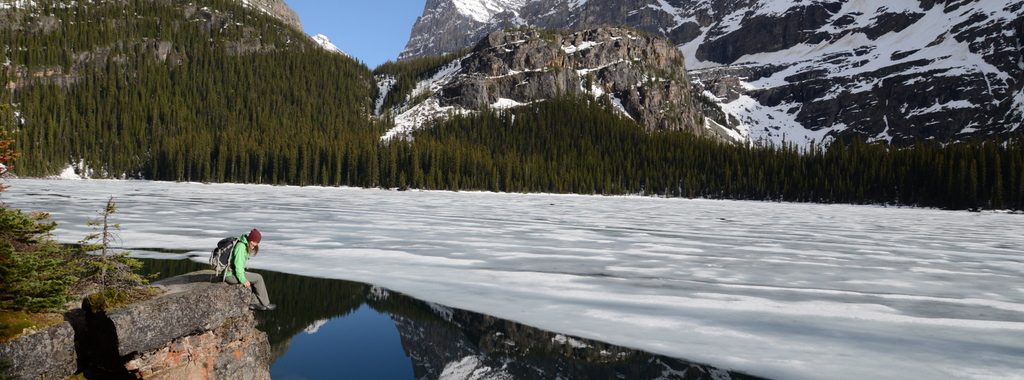Thesis Title: Impacts of a novel predator on aquatic invertebrates in fishless lakes: Implications for conservation translocation
Author: Allison L.K. Banting
Abstract
Fishless mountain lakes hold important ecological and conservation value. As such, managers are establishing conservation goals (e.g., non-native fish removal) to restore the naturalness to many of these lakes. Simultaneously, managers who are recovering native (coldwater) fish populations threatened by climate change (e.g., Westslope Cutthroat Trout, Oncorhynchus clarki lewisi and Bull Trout, Salvelinus confluentus) are exploring conservation strategies involving the intentional translocation of native fish species to more suitable areas. These areas include unoccupied, or naturally fishless, stream and lake habitat within their native range or favorable habitats outside their native range. This action presents a potential threat for fishless mountain lakes as conservation managers view these as recovery habitat for imperiled native fish species. The purpose of my study was to inform native fish recovery efforts by assessing the potential consequences of translocating native fishes to naturally fishless lakes, thus outside their historic distribution. Forty alpine and sub-alpine lakes in Banff National Park, Alberta and Kootenay National Park, British Columbia were sampled and divided into three lake types, including 13 naturally fishless lakes, 13 native fish-bearing or native fish-stocked lakes, and 14 non-native fish-stocked lakes historically unoccupied by fish. Littoral invertebrate community composition, density and diversity were examined among lake types to 1) quantify the impacts of introducing non-native fishes into historically fishless lakes, and 2) quantify the differences between native fish lakes and naturally fishless lakes. These comparisons provided context for the scale of impact between two predators of different geographic origins (native vs. non-native) introduced to fishless lakes. The variation in environmental gradients amoung lake types was controlled for, suggesting fish presence strongly influenced changes to invertebrate community density and composition. Native and non-native fishes have the capacity to similarly alter littoral invertebrate community composition of fishless lakes, yet non-native fishes appear to have the greatest impact on littoral invertebrate density. Although impacts vary between native and non-native predators, the introduction of any novel fish predator to a fishless lake will result in a negative impact to key littoral macroinvertebrates, such as Gammaridae, Ephemoptera and Plecoptera, and a positive impact to burrowing taxa, such as Oligochaeta, Nemata and Chironomidae. While the introduction of non-native fishes has been repeatedly shown to affect invertebrate communities, the translocation of native fishes similarly has the potential to alter the ecology of a naturally fishless lake. With considerations for possible aquatic-terrestrial cross boundary effects, this study suggests that conservation ecologists consider the entire ecosystem when building resilience for climate change.

